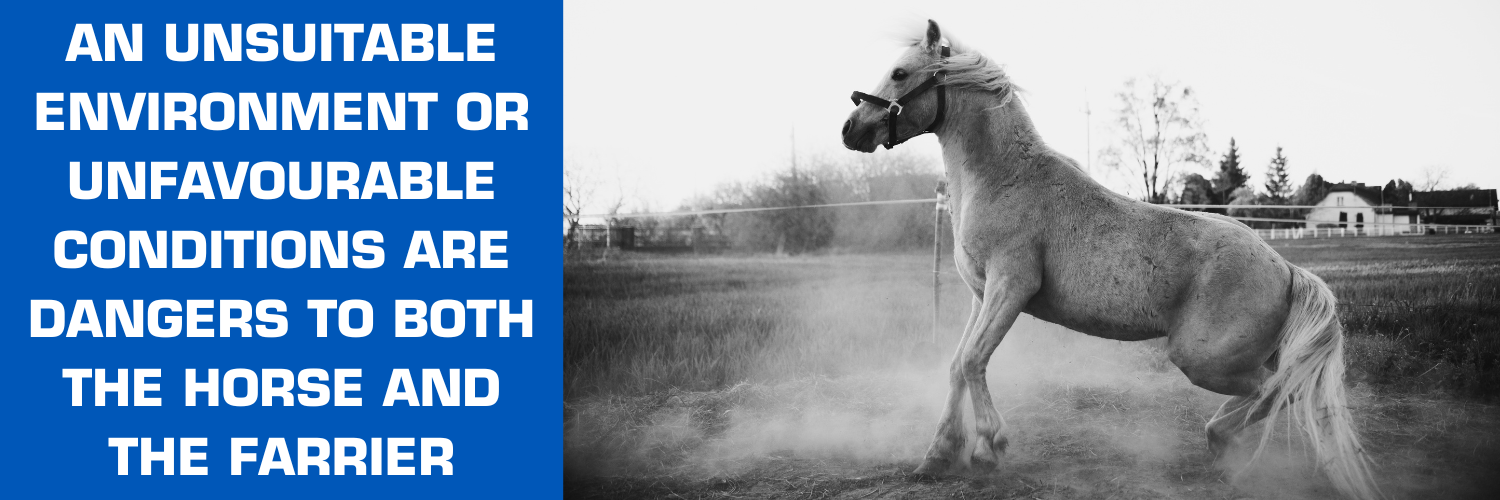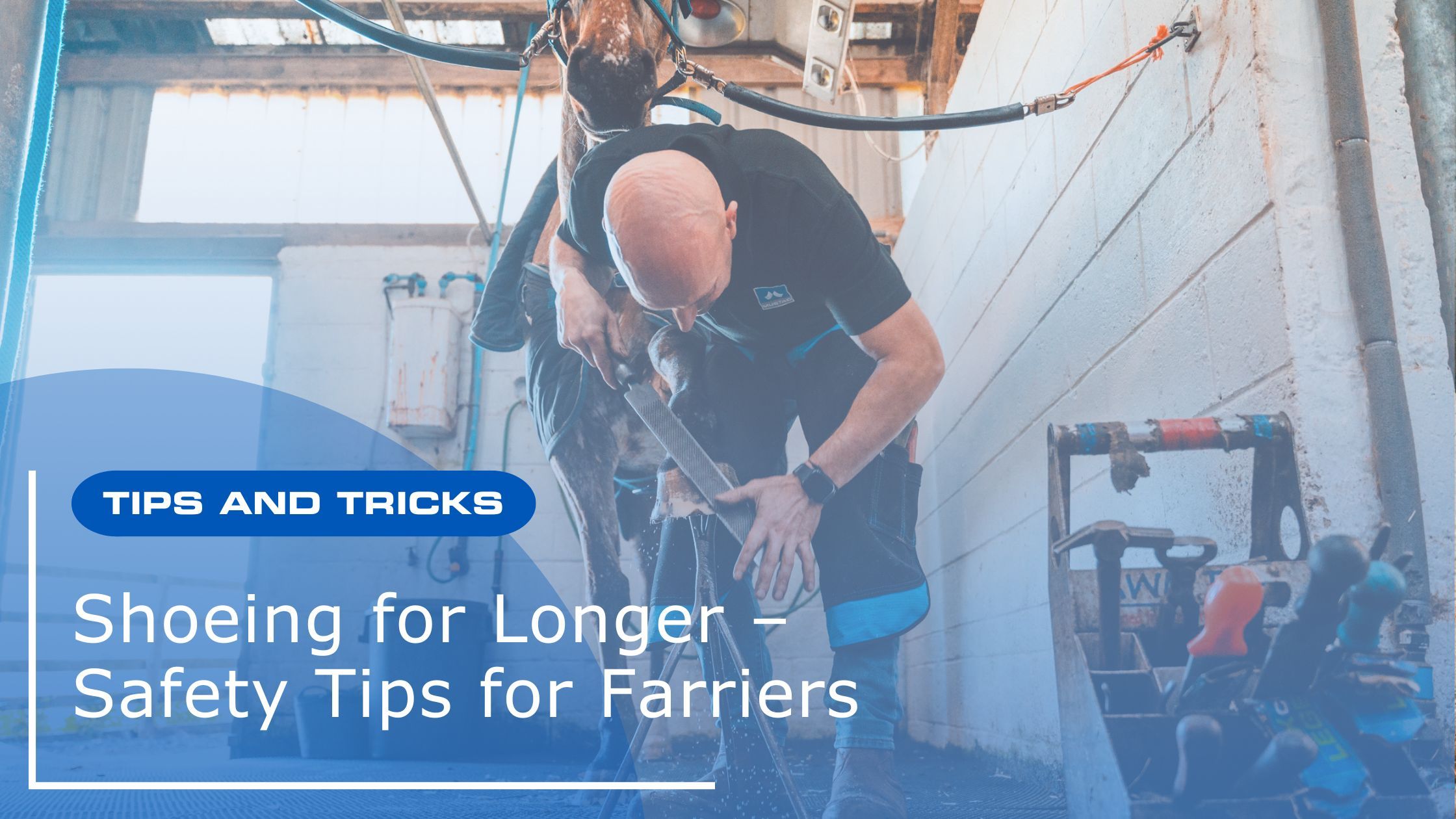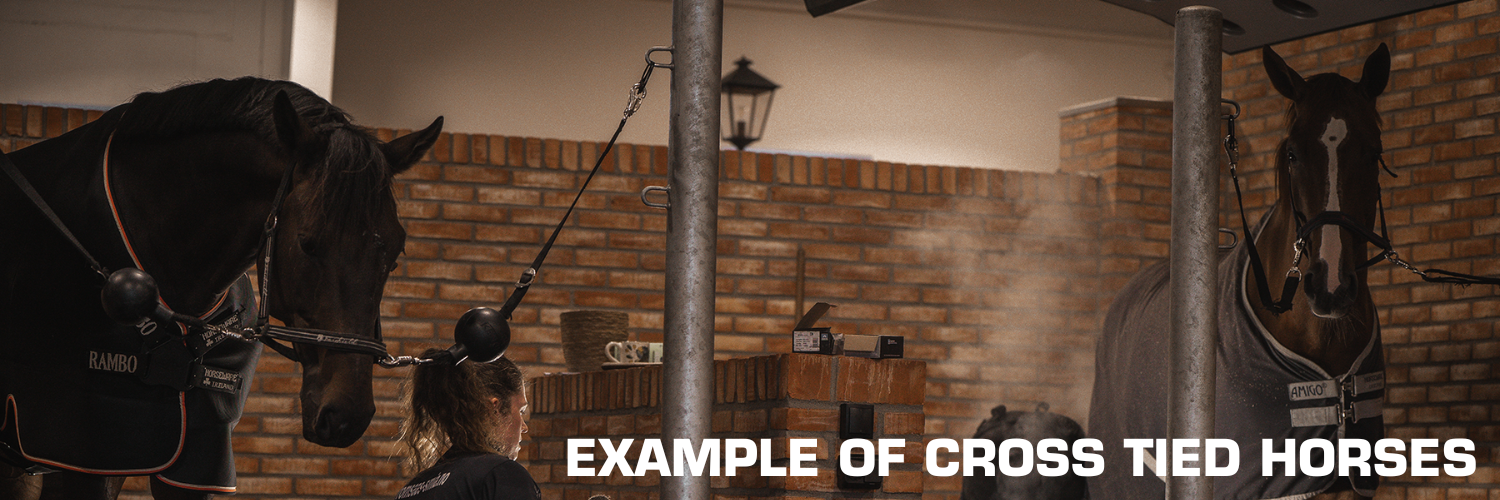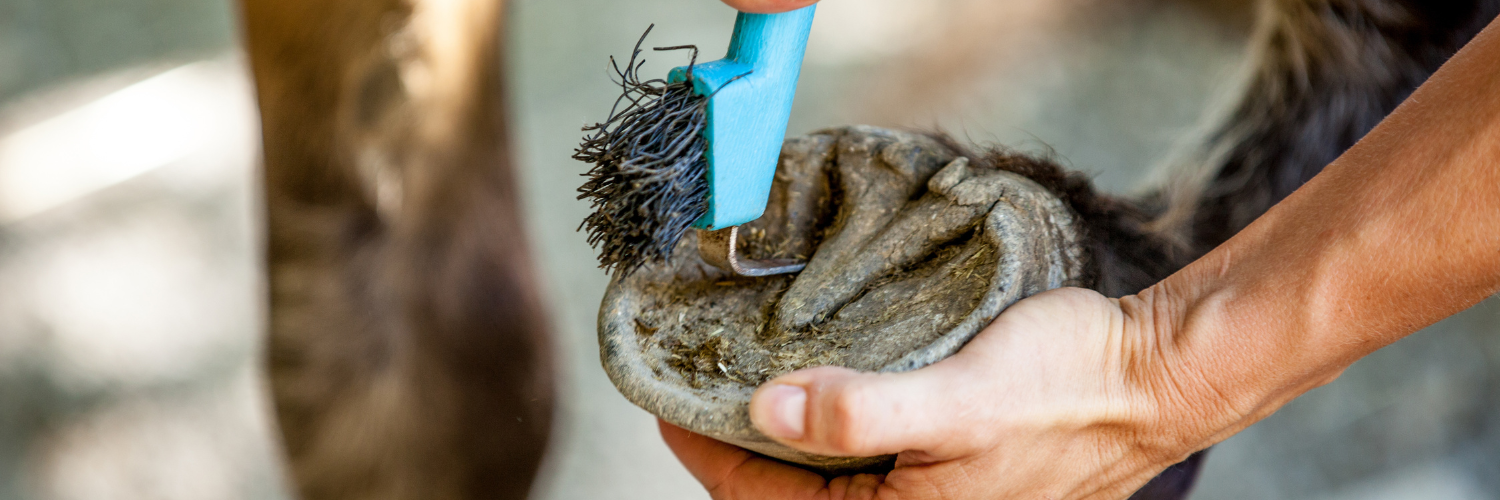Shoeing for Longer – Safety Tips for Farriers
Top Safety Tips For Farriers From Veteran Farrier Carl O’Dwyer
Being a farrier is hard work, and many in the profession end their career earlier than planned due to injury or strain on the body. This is unsurprising given the physically demanding nature of the job, and the fact that clients are heavy at best, and downright dangerous at worst. Having said that, given that most are in the industry due to their love of horses, many will push through pain and discomfort until they’re no longer capable of doing so. While understandable, this can be highly detrimental to your body, as well as your overall wellbeing, so it’s important to find balance and implement strategies to make the job safer.
Carl’s Safety Tips for Farriers
To answer the question of how do we extend our careers and keep working safely in the industry for longer, we spoke with veteran farrier, Carl O’Dwyer.
Carl has been a farrier for over 60 years, and in 2024, still shod around 12 horses per week from his farrier workshop in Victoria. He has achieved this largely due to some great safety protocols that he puts into practice in his working life, and he shared them with us for this blog.
Below are his top three safety tips for farriers:
Creating an Ideal Shoeing Environment
Firstly, and possibly most importantly, creating the right shoeing environment is vital for the safety of both the horse and the farrier. Horses are large animals, and if they’re stressed or uncomfortable, they can unintentionally cause injury to you or themselves. By making sure that they feel comfortable while you’re working on them, you’ll help create a safe shoeing environment and mitigate (but not eliminate) the risk of serious injury.
Check out this video where Carl takes you through how to create an ideal shoeing environment and read more about these tips below.
Allowing Sufficient Space
Horses need enough space around them so that they do not feel cramped, but not so much room that they’re able to move excessively. Carl’s workshop is configured specifically to ensure this, with four shoeing bays set up at a distance of two metres apart.
This allows each horse space to breathe and get comfortable but prevents them from being able to move their whole body 180 degrees. This reduces the chances of them being able to move on top of him or injure themselves, and ensures they are facing the wall so he can work on them in a controlled environment.
Ensuring An Appropriate Surface
An even surface that offers both comfort and traction for the horse and farrier is the ideal option when shoeing. Therefore, ensuring that the floor of the shoeing bay is level should be a top priority, with the surface type being a close second. Ideally your surface should be a concrete or ‘hot mix’ surface with rubber matting over the top.
This is because the rubber matting gives the horse better grip and enhances farrier comfort. It also prevents the horse from wearing down hooves that have been trimmed while the farrier is working on other hooves, a benefit that isn’t provided by a plain concrete or bitumen/hot mix surface.
Cross Tying The Horse
If a horse can move their head too much during shoeing, the chances of them getting themselves tangled or injuring the farrier increase significantly, and even a quiet horse can injure the farrier if it is not correctly restrained. For example, a horse that is secured with a single tie can easily get themselves caught, this leads to a stress response that is dangerous for both the horse and you as the farrier.
To avoid this, Carl always cross ties the horses in his shoeing bays with two leads. By placing one on each side of the head he minimises the horse’s head movement and creates a safer environment for everyone.
Safety Tips When Hot Shoeing For The First Time
Although a great method for getting the perfect fit, hot shoeing presents a unique mix of challenges and dangers – especially if the horse being shod has never encountered hot shoeing before.
For these reasons, Carl prefers to ease horses into the process when completing hot shoeing for the first time. His tips for this can be broken down into two categories:
Use The Buddy Method
If you are shoeing multiple horses, and one is already comfortable with the hot shoeing process, it can be a great help to its buddy. By tying the first time horse in a bay next to your more experienced client, you’ll be able to get them used to the smell before doing their feet, therefore greatly reducing the chances that they’ll get worked up by it.
Go Back To Front
If you only have one horse to shoe and they have not been hot shod before, Carl suggests starting with the hind hooves. This way the smoke from the burning hoof does not rise directly into the horse’s face, therefore reducing the chances of them tensing up or becoming overly stressed.
This tip also works well when shoeing young horses. By starting on their hind hooves first Carl gets the more difficult feet to shoe out of the way early which helps prevent issues from arising when the young horse loses their concentration and wants to move around.
Carl expands on these safety tips when hot shoeing a horse for the first time in the below short video:
Using a Hoof Stand
Back problems are one of the most common injuries for farriers, so it’s no surprise that Carl has often been asked how his back still stood up to the job after more than six decades of work. Luckily, his answer is a simple safety tip that anyone can implement - use an aid like a Hoof Stand. For example, making use of a HoofHelper takes pressure off his back, while also making the process more comfortable for the horse who is being shod.
The HoofHelper’s unique rubber cradle is more comfortable for the horse, which makes things safer for the farrier on multiple fronts. For example, a comfortable horse is less likely to move excessively or become stressed, therefore streamlining the shoeing process. Additionally, the rubber is more forgiving if the farrier’s hand gets caught between the hoof and the rubber cradle, making it safer than if they were to get pinned against something with less give. Unfortunately, the farrier will still likely get an injury, however the rubber cradle may assist in reducing the severity of the injury.
Carl’s Shoeing Longevity Tips For Farriers
In addition to his general safety tips for farriers, Carl also shared some other practices he uses that have allowed him to be shoeing for over 60 years:
Avoid Uneducated Horses
One of the most important steps that Carl has taken to prolong his career is the avoidance of uneducated horses. His opinion on this is simple - If a horse is dangerous and has not been educated to stand and let the farrier perform their task - do not shoe it.
Often young farriers feel pressure to shoe horses that are dangerous, and on many occasions this has resulted in serious injury to the farrier. It is vital to remember that you have every right to tell the owner that their horse needs educating before you will shoe them. Farriers are hoofcare professionals, not horse breakers, and you are allowed to put your safety first.
Assess The Situation First
In addition to avoiding uneducated horses, farriers also need to assess each and every workplace if you want to ensure safety and longevity. If the environment, horse or any other factor presents an unreasonable level of risk, decline the job and move to your next customer.

Don’t Rush Or Shoe Too Many Horses
Finally, rushing to finish jobs is not good for the horse or your body. Carl believes you should allow one hour to shoe a horse properly, and so in a standard work day, you should not shoe more than eight horses. Carl suggests booking horses in on the hour, so you can slow down and focus on the horse, therefore achieving top quality results and extending your career by reducing the chance of injury.
Learn more about Carl’s tips for shoeing for longer with the video below:
Knowledge comes with experience over time, and Carl has plenty of both. By following these safety tips for farriers, you can create processes that help you complete jobs in a safer manner, and work in the farrier industry for longer.



